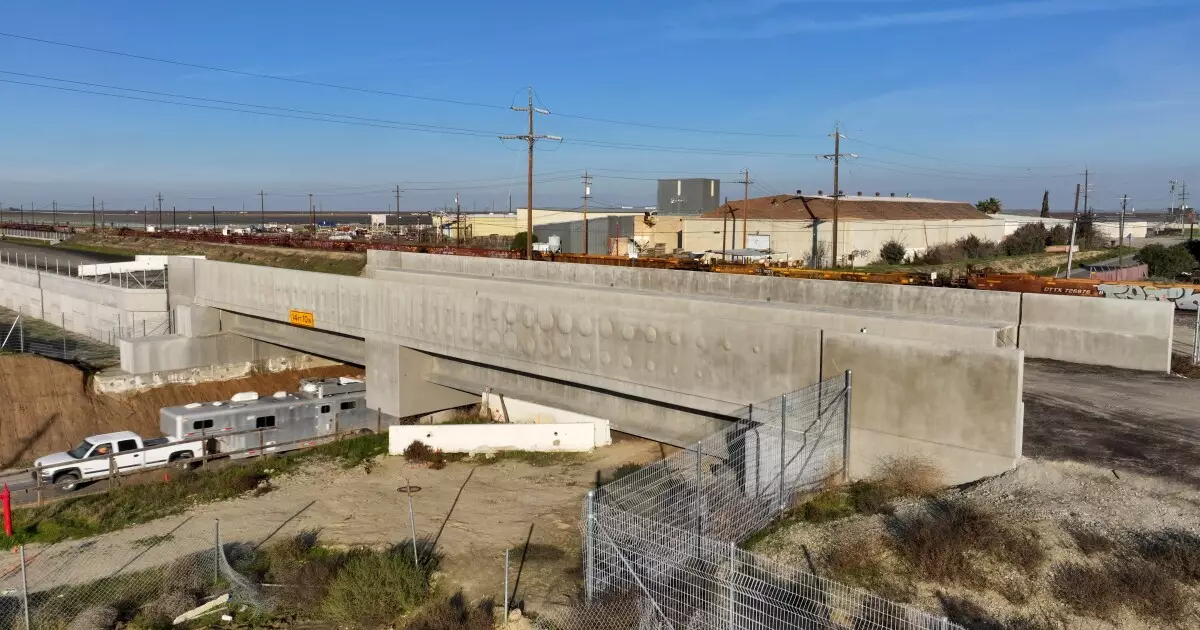The ambitious California High-Speed Rail (CHSR) project, envisioned to revolutionize transit in the state and signify a testament to modern infrastructure, has increasingly become mired in political conflict and fiscal scrutiny. In the wake of recent statements from the Trump administration regarding federal funding, the project’s future hangs in uncertainty, revealing key questions about accountability, efficiency, and the very essence of governmental support for large-scale initiatives.
In a bold move, Transportation Secretary Sean Duffy recently announced that the Trump administration would initiate an investigation into the long-embattled California High-Speed Rail Authority. The focus of this inquiry is to assess compliance with federal funding agreements, particularly scrutinizing whether the CHSR has adequately adhered to the commitments it made in exchange for approximately $4 billion in federal grants. Duffy articulated a fundamental principle in government spending: the need for accountability regarding how states utilize federal funds. The inquiry carries profound implications, not just for the CHSR but for overarching federal-state relationships regarding infrastructure investments.
The essence of this investigation underscores critical tensions between federal oversight and state autonomy. While the administration aims to hold California accountable, it inadvertently raises larger questions about the direction of public transportation funding and infrastructure development in a politically polarized environment.
The beleaguered CHSR has long been a target for criticism, particularly from Republican factions, who argue against its escalating costs and protracted timeline. Originally conceived with a budget of $33 billion and an expected completion by 2020, the vast endeavor now flaunts a daunting projected expense of $128 billion without a definitive end date. This stark transformation has led to widespread skepticism and frustration among stakeholders, including the very taxpayers who funded the initial approvals.
Duffy’s remarks at a recent press conference shed light on public discontent, as he expressed outrage over the project’s drawn-out timeline and colossal spending—pointing to a staggering $16 billion already expended with no rail laid to justify those expenses. This scenario positions the CHSR as a cautionary tale of mismanagement, raising critical inquiries about governance practices in large-scale public projects.
The California High-Speed Rail has become a focal point of political strife, with GOP lawmakers urging the administration to investigate the project’s deepening financial conditions. Notably, a concerning report by the CHSR’s Inspector General revealed an alarming funding gap of $6.5 billion for the first segment of the project between Merced and Bakersfield. This scenario has spurred fears that the ambitious project may become an everlasting promise unfulfilled—a moniker that has bred animosity across party lines.
The challenges presented by the CHSR extend beyond fiscal accountability, confronting broader issues of infrastructure planning, political will, and public trust. Opposition legislators have leveraged the failure of the CHSR to galvanize support among constituents disillusioned by the perceived wastefulness of government projects. Their campaign against the CHSR reflects a broader sentiment prevalent among many Americans who question the government’s ability to execute large-scale infrastructure successfully.
Amidst the maelstrom of critique, the California High-Speed Rail Authority staunchly defends its operations. Executive Ian Choudri welcomed the federal investigation, citing a series of independent audits that vouch for their financial integrity. Moreover, the authority highlights the economic impact the project has allegedly generated, claiming it has injected approximately $22 billion into the state economy, primarily within the struggling Central Valley.
While proponents argue for the potential benefits of high-speed rail systems in reducing congestion and pollution, the stark financial realities pose a significant hurdle to the persuasive narrative. The revelation of a striking shortfall, potentially reaching $99 billion, only deepens skepticism regarding the viability of the project, challenging its proponents to balance idealism with realism.
As the Trump administration proceeds with its investigation, the fate of California’s High-Speed Rail hangs in a precarious balance. Stakeholders must grapple with pathway decisions that transcend mere construction; they pertain to the future of infrastructure investments and the principles governing public financial responsibility.
Ultimately, the question remains: can California’s ambitious vision for high-speed rail endure the scrutiny and emerge as a transformative project, or is it destined to become a symbol of bureaucratic inefficiency? The debate surrounding this megaproject reflects larger societal conversations about the role of government in infrastructure development, accountability in public spending, and the potential for visionary projects to tangibly impact communities. With the stakes higher than ever, all eyes will be on California as it navigates this complex landscape in pursuit of a high-speed reality.

